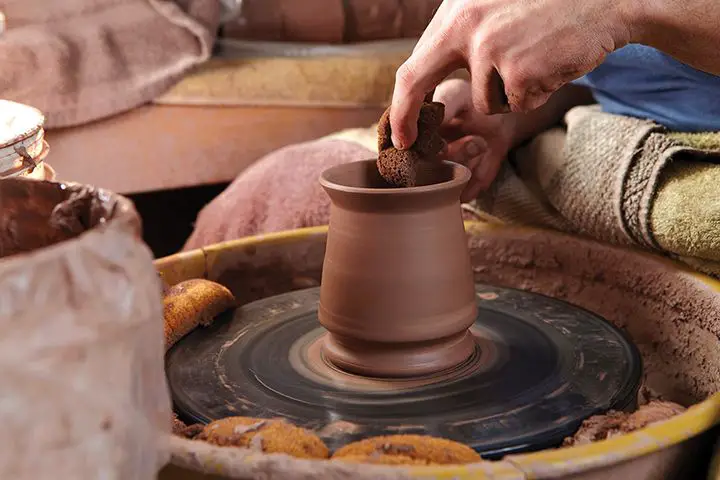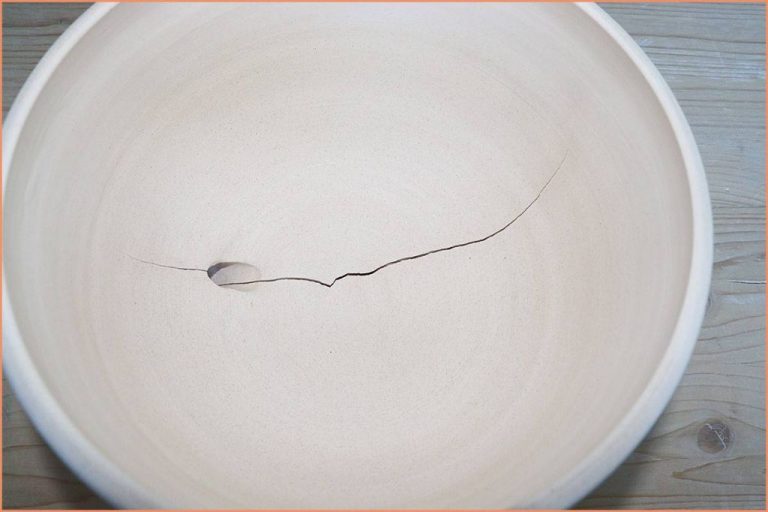How Much Does It Cost To Build A Clay Pizza Oven?
Clay pizza ovens have become increasingly popular for home pizza baking enthusiasts over the past few years. There’s something magical about sliding a homemade pizza into the mouth of a clay oven and pulling out a perfectly charred and bubbly pie a few minutes later. Clay ovens can reach temperatures upwards of 700-900°F, much hotter than your standard home oven, allowing you to cook authentic wood-fired pizza with a crispy crust and smoky flavor. Building your own clay oven is a fun DIY project that allows you to fully customize the design, materials, and functionality. While it does require some time, skill, and investment to construct a high-quality clay oven, most who take on the challenge find it incredibly rewarding. In this article, we’ll break down the complete costs and process for building your own dream clay pizza oven at home.
Oven Design Options
When building a clay pizza oven, one of the first decisions is selecting the design and size. There are several common types of clay ovens to consider:
Pompeii Oven: This traditional wood-fired oven is built from clay bricks and has a domed ceiling. Pompeii ovens can bake pizzas in under 90 seconds and reach temperatures over 700°F. They are efficient but require more materials and skill to construct.
Tuscan Oven: A simpler design with an arched opening and roof. Tuscan ovens use less clay but may not retain heat as well. Temperatures reach 600-700°F for fast baking.
Portable Oven: As the name suggests, these compact ovens can be moved around. They are built with a clay dome, chimney, and floor. Portable ovens allow you to cook pizza on-the-go.
Barrel Oven: An inexpensive and basic design. Barrel ovens have a rounded clay body but no floor or chimney. They can reach 500°F and work well for personal pizzas.
The oven size also depends on your needs. Smaller ovens of 3-4 feet work for household use. Larger restaurant-style ovens are 4-6 feet wide and can bake several pizzas at once.
Clay Materials
The type of clay used is an important factor in building a clay pizza oven. Clay is typically sourced locally, as transporting large quantities can be expensive. Common clays used include:
Fire clay – This refractory clay has a high alumina content, generally over 30%. It withstands heat well without cracking or crumbling. Fire clay is more expensive than other clays, but provides the most heat resistant and durable oven material.
Pottery clay – While not as heat resistant as fire clay, pottery clay contains enough silica and alumina to be used in oven construction. When fired at high temperatures, pottery clay vitrifies into a ceramic material.
Cob – A blend of clay, sand, straw and water. The straw gives cob high insulation value. The mixture is sculpted by hand into oven walls. Cob requires careful moisture control to prevent cracking while drying.
Adobe – Made from clay, sand, straw and water. The clay acts as a binder for the sand and straw. Adobe has good insulation properties but lower heat resistance than fire clay. It’s molded into bricks sun-dried prior to oven construction.
The choice depends on availability, cost, heat resistance required and DIY vs professional construction. Fire clay offers the best performance, but requires high temperatures to fire. Cob and adobe are easier for DIY projects but may need repairs periodically.
Foundation
A clay pizza oven requires a sturdy foundation to support the weight of the oven and retain heat effectively. There are a few options to consider for building the foundation:
-
Concrete slab – This is the most popular option. Pour a 4-6 inch thick reinforced concrete pad. Make sure to slope it slightly for drainage. The slab should extend at least 12 inches past the oven footprint on all sides.
-
Brick or stone – Construct the foundation from bricks or natural stone. This will involve a lot more time and skill but can allow the foundation to complement the oven aesthetically.
-
Graveled area – For a simpler portable oven, you can place the oven on 4-6 inches of gravel. The gravel helps level the oven and traps heat.
The foundation should place the oven floor 2-4 feet above ground. This makes loading wood and cooking easier. Preparing the site and constructing the foundation typically represents at least 20% of the total oven cost.
Oven Construction
Constructing a clay oven involves several key steps:
-
Build the foundation and floor. This provides a stable base and insulates the oven from the ground. Often concrete, brick or cob is used.
-
Install insulation on the foundation. Vermiculite or perlite is commonly used to retain heat.
-
Build the oven dome using clay/cob mixtures. Layer and shape into a rounded dome, supported by sandbags or other materials until dried.
-
Apply cob to the outside of the dome for protection and aesthetics. Multiple layers are used to build up thickness.
-
Add an oven door. Cast an arched opening and install a metal door with insulation.
-
Build the chimney using brick, stone or metal. This provides airflow and releases smoke.
-
Coat the oven interior with natural clay plaster to retain heat and finish the surface.
-
Cure the oven slowly using small fires to fully dry and season it before cooking.
Following detailed steps for laying bricks or cob allows the oven to be structurally sound. Patience is needed throughout building and curing.
Insulation
Insulation is crucial for clay pizza ovens in order to maintain high temperatures and efficient cooking. The intense heat from the fire can damage the oven over time if heat is allowed to escape through the walls and ceiling.
Common insulation materials used are:
- Perlite – An abundant volcanic glass that is super-heated and popped like popcorn. This creates many tiny air pockets that trap heat effectively.
- Vermiculite – Similar to perlite, this is a mineral that expands when heated. Vermiculite insulates well and mixes with mortar for easy installation.
- Fire bricks – These refractory bricks withstand very high heat. Using multiple layers helps insulate the oven interior.
- Ceramic fiber blanket – High-temperature insulation blankets wrap around the oven dome for maximum heat retention.
An insulation layer 4-6 inches thick is typical for wood fired clay ovens. Proper insulation will help the oven retain heat, use less fuel, and maintain cooking temperatures of 700-800°F or more.
Door
The oven door is a critical component that impacts the overall performance and functionality of your clay pizza oven. The door needs to maintain heat efficiently when closed, while also being easy to open and close as needed. There are two main options when it comes to materials for constructing your clay oven door:
Cast Iron
Cast iron is a popular choice for wood-fired oven doors. It conducts heat well, which helps maintain the oven’s temperature. Cast iron doors are very durable but can be quite heavy. They usually have a handle attached to make opening and closing safer and easier. Look for cast iron doors designed specifically for wood-fired ovens to ensure a proper fit.
Steel
Steel oven doors are lighter in weight than cast iron. Stainless steel grades 304 and 430 are common choices that can withstand high heat. Steel doors may have glass windows, providing the ability to monitor your pizzas during baking. The frame around a glass window should be made of steel to handle the heat. Steel doors are often finished with powder coating for added durability and aesthetics.
Proper construction is also key for the oven door. It must fit tightly to the oven opening, with minimal gaps where air and heat can escape. High-temperature silicone or fire rope gaskets help seal the joints. Sturdy hinges will enable smooth opening and closing of the heavy door. And a latch keeps the door securely closed when needed. Investing in a well-made door designed for wood-fired ovens ensures the best performance.
Chimney
The chimney is a crucial component of any wood-fired pizza oven. Proper chimney height and design will promote good airflow and allow smoke and hot gases to vent properly. This prevents smoke backflow into the oven chamber and helps regulate oven temperature.
As a rule of thumb, the chimney should be at least 5-6 feet tall. Shorter chimneys don’t allow enough draft for hot air to rise and exit. The interior chimney diameter should be around 150-200mm (6-8 inches). Narrow chimneys can restrict airflow.
Construct the chimney from solid materials like bricks, clay pipes, or insulated stainless steel. This prevents heat loss and cracking. The chimney should have straight, smooth walls for unobstructed venting.
Position the chimney opening vertically over the oven’s fire/cooking floor to capture rising heat. Offset chimneys disrupt airflow. Use a damper to control airflow if needed.
A proper chimney design greatly improves oven performance. Invest effort into constructing a tall, straight chimney with an appropriate opening over the fire area.
Interior
The interior design of a clay pizza oven is what really sets it apart from a standard oven. The oven floor and dome are what give the clay oven its distinctive characteristics and abilities.
The oven floor is traditionally made from solid clay tiles or bricks. These absorb and hold heat exceptionally well, allowing the oven floor to reach temperatures upwards of 800-900°F. This high and even heat is perfect for baking authentic wood-fired pizza with crisp, charred crusts.
The dome is also made from clay materials, either shaped clay or bricks. It ranges from 12-16 inches in height to accommodate most pizzas. The dome helps radiate heat downwards and across the oven floor for perfect cooking. It also allows smoke and heat to accumulate before escaping through the chimney.
Together, the floor and dome create the ideal environment for baking pizza or any other foods that require high, dry heat like meats, vegetables, and breads. The all-natural clay holds and distributes heat evenly while imparting a subtle, earthy flavor.
Total Cost Breakdown
Building a high-quality clay pizza oven is a significant investment, but can be worthwhile for pizza enthusiasts. Here is a breakdown of typical costs:
DIY Clay Oven
If you’re building the oven yourself, expect costs around:
- $500-800 for high-temperature fire bricks and clay
- $200-300 for cement, sand, and other foundation materials
- $100-200 for insulation
- $50-150 for chimney materials
- $100-300 for tools if you don’t already have them
In total, expect a DIY clay oven to cost $1000-1750 or more, depending on design choices. You can reduce costs by scavenging or repurposing materials.
Professionally Built Oven
Hiring a professional mason to build a custom clay oven will be more expensive:
- $2000-5000 for materials and labor
- $500-1000+ for site preparation
In total, a professionally built oven will likely cost $3000-6000+. Higher-end options with specialty features and materials can cost $10,000+.
The advantage is getting a perfectly constructed oven tailored to your space without doing the work yourself.



